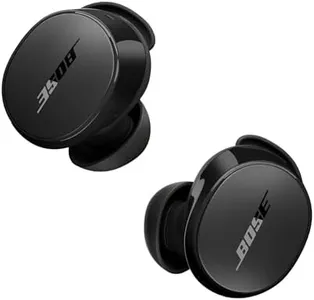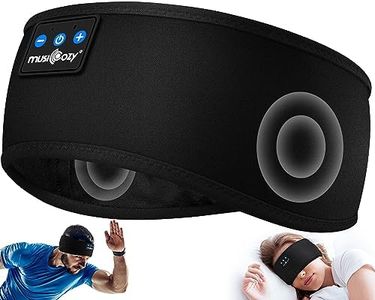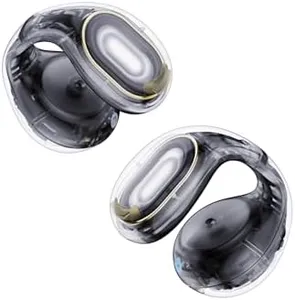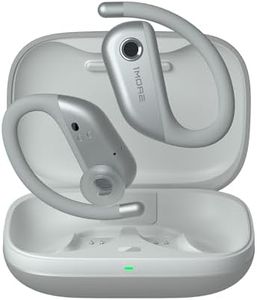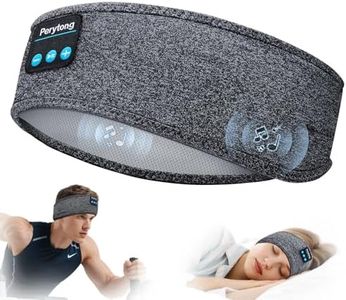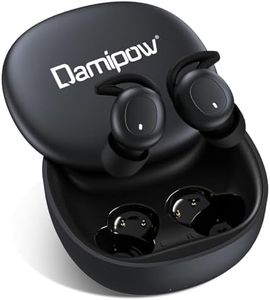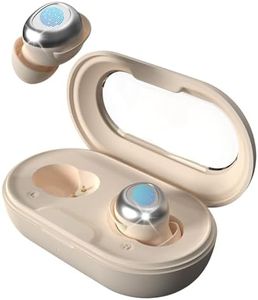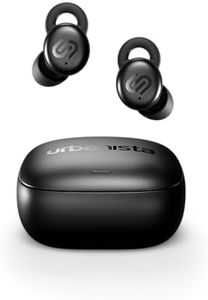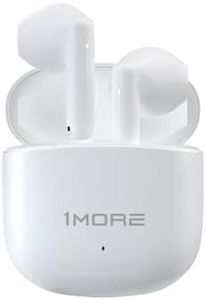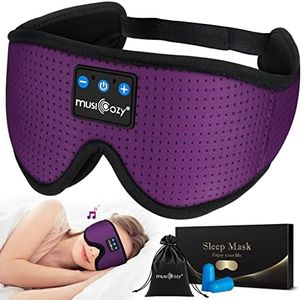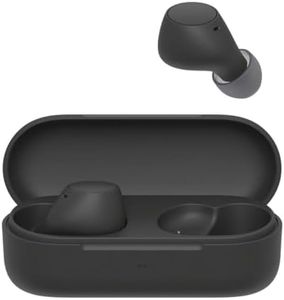We Use CookiesWe use cookies to enhance the security, performance,
functionality and for analytical and promotional activities. By continuing to browse this site you
are agreeing to our privacy policy
10 Best Sleeping Earbuds
From leading brands and best sellers available on the web.Buying Guide for the Best Sleeping Earbuds
Choosing sleeping earbuds is all about finding something that helps you rest comfortably through the night while blocking out unwanted noise. It's important to balance comfort, sound quality, and noise blocking so that you don’t get disturbed while trying to sleep. Since everyone has different ears and sleeping routines, it's good to know what specs matter most and how they relate to the way you like to sleep—whether you’re a side sleeper, a restless mover, or someone who loves soothing sounds.Design and ComfortThe design and comfort of sleeping earbuds are crucial because they need to stay in your ears all night without causing pain, popping out, or feeling bulky, especially if you sleep on your side or turn often. Earbuds usually come in different shapes and sizes—some are ultra-flat, some are very soft, and others may have additional padding. To pick what’s best for you, think about your sleeping position and if you get irritated by anything pressing into your ears. Side sleepers often benefit from flatter, smaller designs while back sleepers might have a bit more flexibility.
Noise Isolation or Noise MaskingNoise isolation refers to how well the earbuds physically block out sound, while noise masking plays soothing sounds to help cover up noise like snoring or traffic. Some earbuds use a tight fit to block sounds, others use audio technology to replace noise with calming audio. If you need silence, go for high isolation; if you want to drift off to gentle music or white noise, focus on good masking features. If you live in a noisy area or with snorers, prioritize this spec according to what helps you sleep best.
Battery LifeBattery life is important if you want your earbuds to last through the night, especially if you listen to white noise, music, or sleep meditations. Earbuds typically vary from just a few hours to all-night use. If you often sleep longer or like to listen for extended periods, look for earbuds offering 8 hours or more. If you just need help falling asleep and don’t need the earbuds in all night, shorter battery life may be sufficient.
Wireless or WiredSleeping earbuds can be wireless or wired. Wireless options are more convenient because you don’t have to worry about cords tangling during sleep, but they need to be charged. Wired earbuds don’t need charging but can sometimes get in the way. Consider if charging your earbuds regularly is manageable, or if you’d prefer not to deal with batteries and would rather avoid the risk of wires causing discomfort overnight.
Sound Quality and Volume LimitingSound quality relates to how clear and pleasant the audio is, while volume limiting ensures you can’t turn the sound up too loud, which can damage your hearing over time. For sleeping, you generally don’t need deep bass or super-loud sound—you want gentle, soothing clarity for things like white noise, podcasts, or nature sounds. If you’re sensitive to harsh or tinny sounds, choose earbuds with good clarity at low volumes and consider those with volume-limiting features.
App Integration and FeaturesSome sleeping earbuds come with their own apps that let you control the type of sounds, sleep tracking, or even gentle alarms. This spec is important if you like customizing your sleep sounds or want feedback on your sleep habits. If you appreciate tech extras and enjoy tracking your sleep, prioritize models with strong app support; if you prefer simplicity, then built-in basic features may be all you need.
